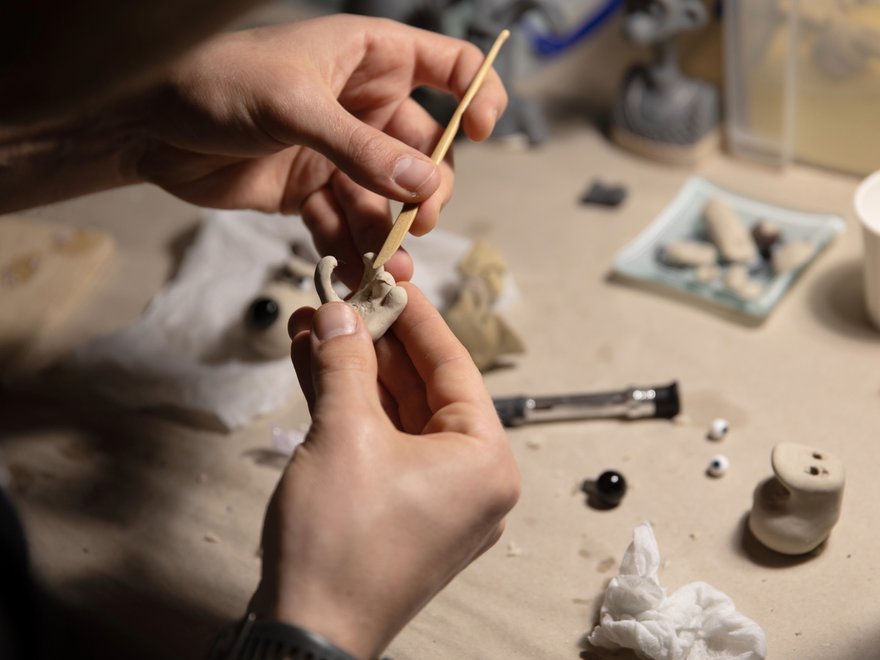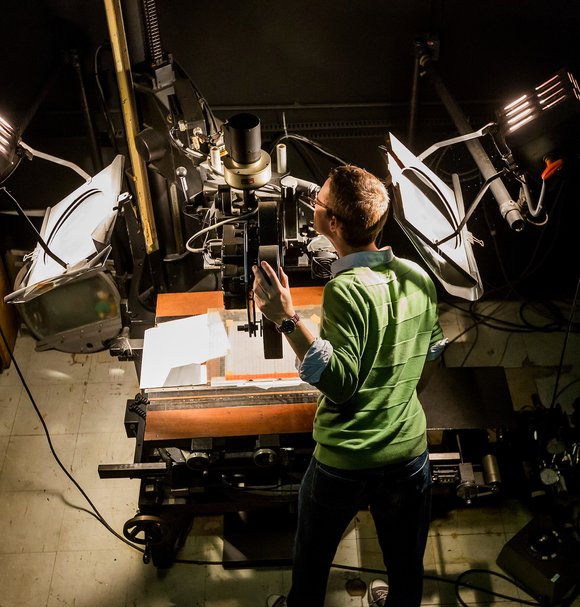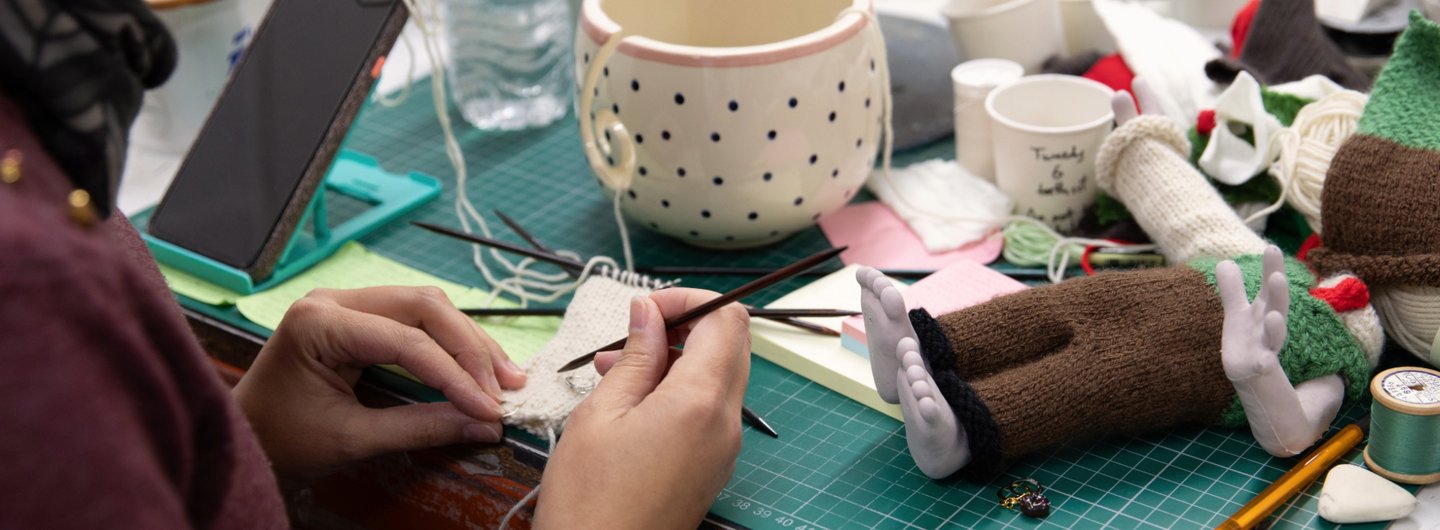
Key details
Date
- 6 November 2025
Read time
- 5 minutes
RCA graduates have helped shape Aardman’s playful, handcrafted world, carrying an experimental spirit from art school into the world of commercial animation.
Animation has long been overlooked as a fringe discipline; difficult to categorise and often dismissed as child’s play. But its oddness has always been its strength, and nowhere is that truer than at Aardman, the Bristol-based studio that turned handmade British humour into global iconography. And in doing so, it opened a space for a new generation of animators to thrive.
Many of those trace their roots back to the Royal College of Art. Over four decades, RCA graduates have flowed steadily into Aardman’s ranks, carrying with them a sensibility born in the College’s animation studios. Today, five RCA alumni hold senior creative roles at the studio, shaping everything from commercials to Aardman’s in-house Academy.
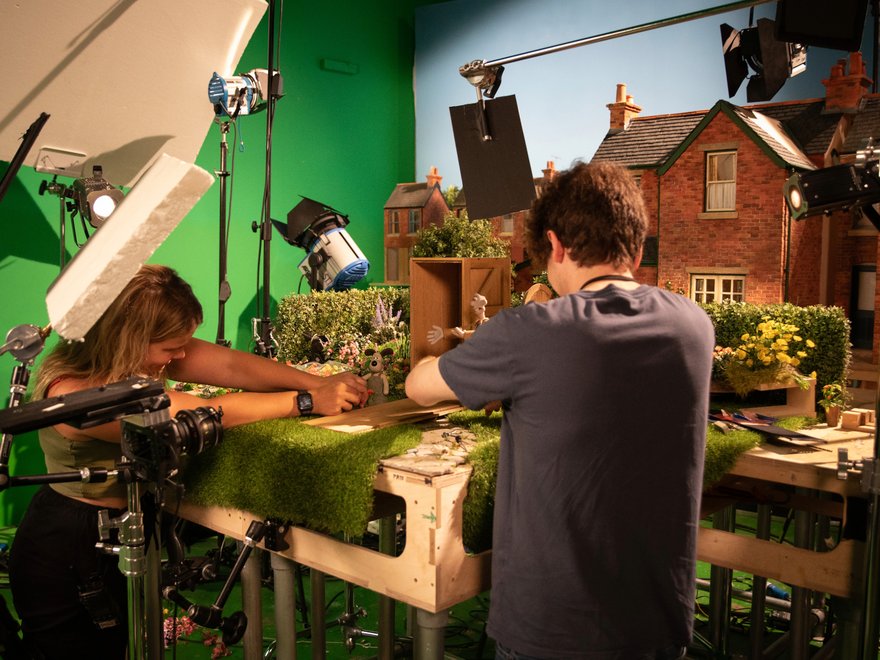
Behind the scenes of a Wallace & Gromit production at Aardman studios. Courtesy of Aardman.
Aardman’s Creative Director Steve Harding-Hill and Mark Simon Hewis, now Head of the Aardman Academy, both trained in the College’s fiercely independent environment. “We were used to doing everything ourselves—storyboarding, animating, editing—probably not that brilliantly, but it meant we understood how all the pieces fit together,” says Harding-Hill, who joined Aardman in 1999 after graduating from the RCA. “That course forces you to do it all,” Hewis agrees. “It’s chaotic, but that’s where you learn what you’re actually good at, and what you’re not so good at.”
For both, art school was as much about finding belonging as it was about finding a style. Harding-Hill, who grew up in a small Yorkshire town, was the first in his family to go to art college. “As a working-class kid, doing a master’s at the Royal College felt daunting,” he says. “It wasn’t just about making work, it was about feeling like you had a right to be there.” Hewis battled a similar sense of impostor syndrome. “I spent the first three months thinking I was going to get kicked out because they’d made a mistake,” he remembers. “Once Joan Ashworth [then Head of Programme] told me, ‘You are supposed to be here,’ I loved every second.”

RCA Animation students at work in the studio
That sense of being outsiders became a creative engine and a reason to push against what was expected. For Hewis, that meant making an incredibly experimental graduation film, what he describes as a "distressing musical”, that ran to 15-minutes and was fully orchestrated by students from the nearby Royal Academy of Music. But while Hewis can now see that his motivations for making something “weird” might have come from a sense of inadequacy, his drive to be different ultimately shaped his creative identity.
Harding-Hill’s start in the industry came from a similar unselfconsciousness about how things were ‘supposed’ to be done. “When I finished my two-year master’s at the RCA, Joan Ashworth’s husband, who was a producer, said to me, ‘You’d make a good commercials director.’ I remember thinking, what’s one of those? He explained it was someone who makes animated TV commercials and gets paid for it. I thought, I like the sound of that. I had no idea I’d end up making commercials for 30 years.”
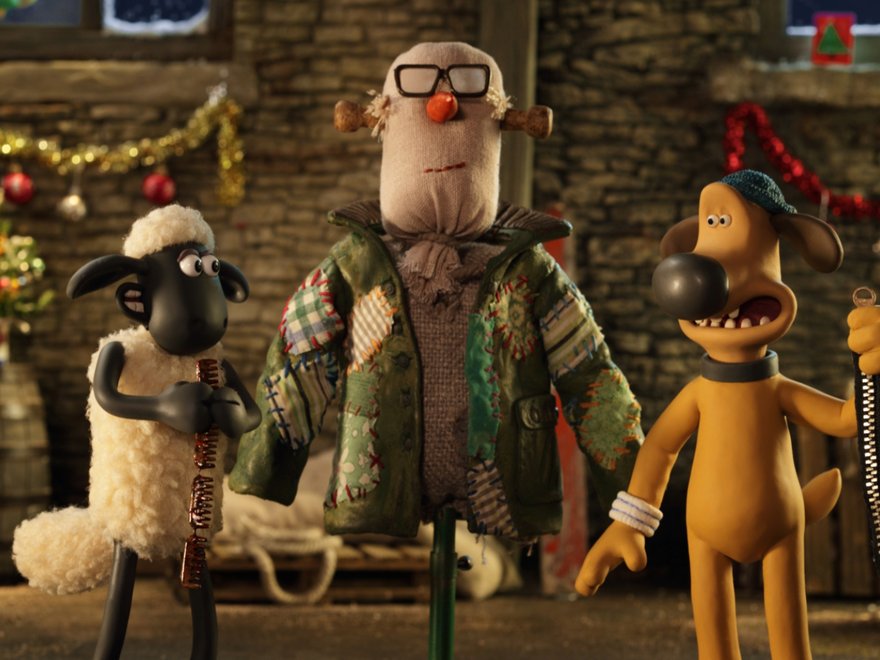
Still from Aardman's Barbour advert, directed by RCA alumna Steve Harding-Hill
Now Creative Director of Aardman’s Commercials and Short Form division, Harding-Hill oversees everything from brand work to short films for charities and major broadcasters. His early student films, however, were darker and stranger. “I was doing an illustration degree, and my work was really dark and gnarly,” he recalls. “Then I’d see this beautiful animation on TV — Nick Park’s Creature Comforts — and I was in love with it. But I never thought I’d end up working at a place like Aardman. They just seemed too good.” Now, under Aardman, he is directing commercials for household names like Barbour and the Royal Albert Hall, a far cry from his experimental student days.
If Harding-Hill represents the commercial arm of Aardman’s creativity, Hewis has helped shape its educational heart. The Aardman Academy began as an internal training programme to upskill staff already working within the studio. But under Hewis’s leadership, it has grown into something much more expansive. In practice, that means the Academy is led by working filmmakers and offers a space where aspiring animators can learn directly from the studio floor.
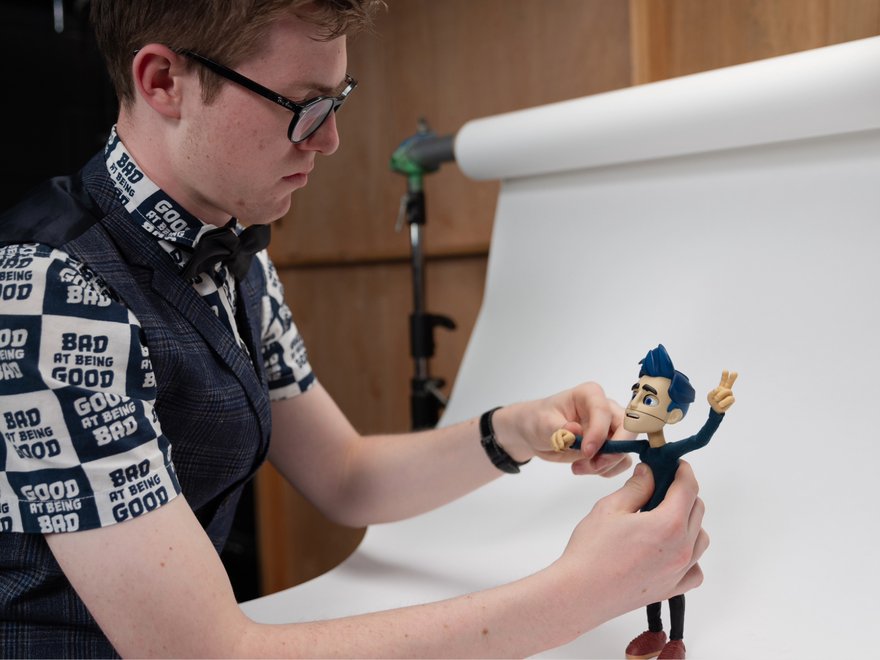
Behind the scenes of an Aardman production
Like the RCA, its strength lies in collaboration and creative risk-taking. It values voice as much as technique, and encourages students to find their own unique point of view early on. “Everyone who gets to this level already has something,” says Hewis. “The trick is helping them see it. You don’t have to know all the answers, but you do need to understand your worth — what you can bring.”
For Harding-Hill, that philosophy echoes his own experience. He still remembers his lecturer at Leeds Polytechnic — John Ross, himself an RCA graduate — who urged him to apply to the College. “Nobody from our course has ever got in,” Ross told him. “Be the first.” As a working-class kid from a small Yorkshire town, that encouragement was life-changing. “It wasn’t just about the work,” he says. “It was about feeling like you had a right to be there.”
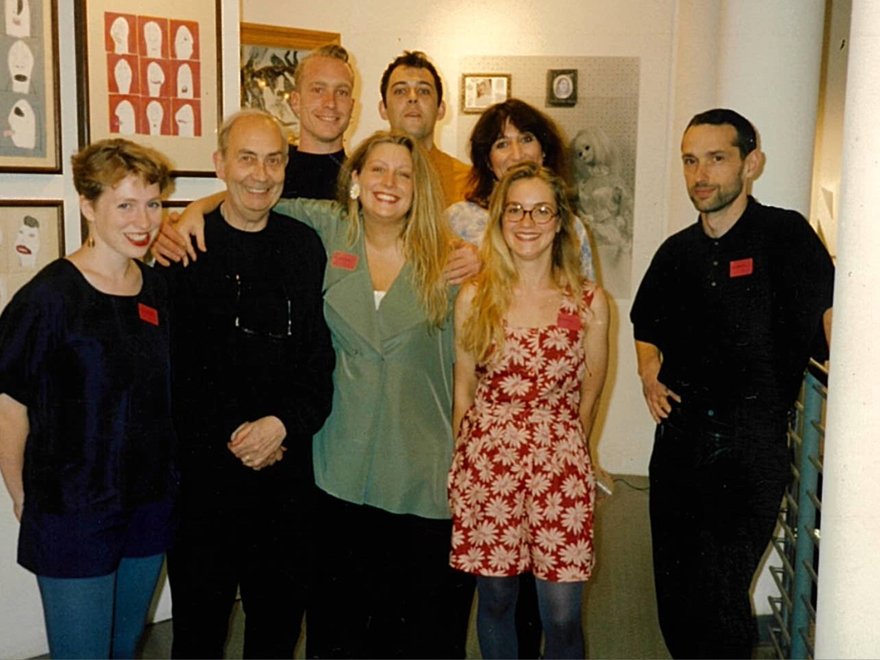
Sarah Cox (far left) now Aardman’s Executive Creative Director, during her RCA Animation days in the early 1990s.
As Aardman has grown into an international studio, the challenge has been to preserve that scrappy, exploratory energy that many RCA graduates embody, within large-scale productions. “It’s a challenge to maintain an environment that encourages creativity to thrive within tight production deadlines,” says Sarah Cox, Aardman’s Executive Creative Director and an RCA Animation alumna. “Our philosophy prioritises development and creative exploration. Stop-frame is expensive, so we make as many creative decisions as possible before shooting. But that also gives us time—never enough—for hands-on play and the building of new visions.”
That balance between craft and curiosity runs through all Aardman productions, from Shaun the Sheep to Wallace & Gromit, and most recently Robin Robin, the Oscar-nominated stop-frame musical created by RCA graduates Mikey Please and Dan Ojari. “We look for storytellers who can act through their characters,” Cox says. “Robin Robin’s felted world gave us a new aesthetic language and a whole universe to build upon.”
This singular spirit is typical of RCA Animation graduates but also runs through much of Aardman’s DNA. Even Nick Park, the studio’s most celebrated collaborator, embodied that instinct to challenge convention from his student days at the National Film and Television School (NFTS). “Nick was doing something no one else was doing at the NFTS when he made Wallace & Gromit,” says Hewis. “He was basically making a kids’ film out of plasticine; it was so not the done thing.” At the time, the NFTS leaned toward more serious output, but Park’s stop-motion short quietly broke those rules.”
What unites the RCA and Aardman is a shared belief in creative conviction and a celebration of the courage it takes to follow through with bold ideas. Both nurture artists who trust their instincts, take risks, and find their voice through experimentation. It’s that blend of confidence and risk-taking that continues to define the work emerging from both institutions.
